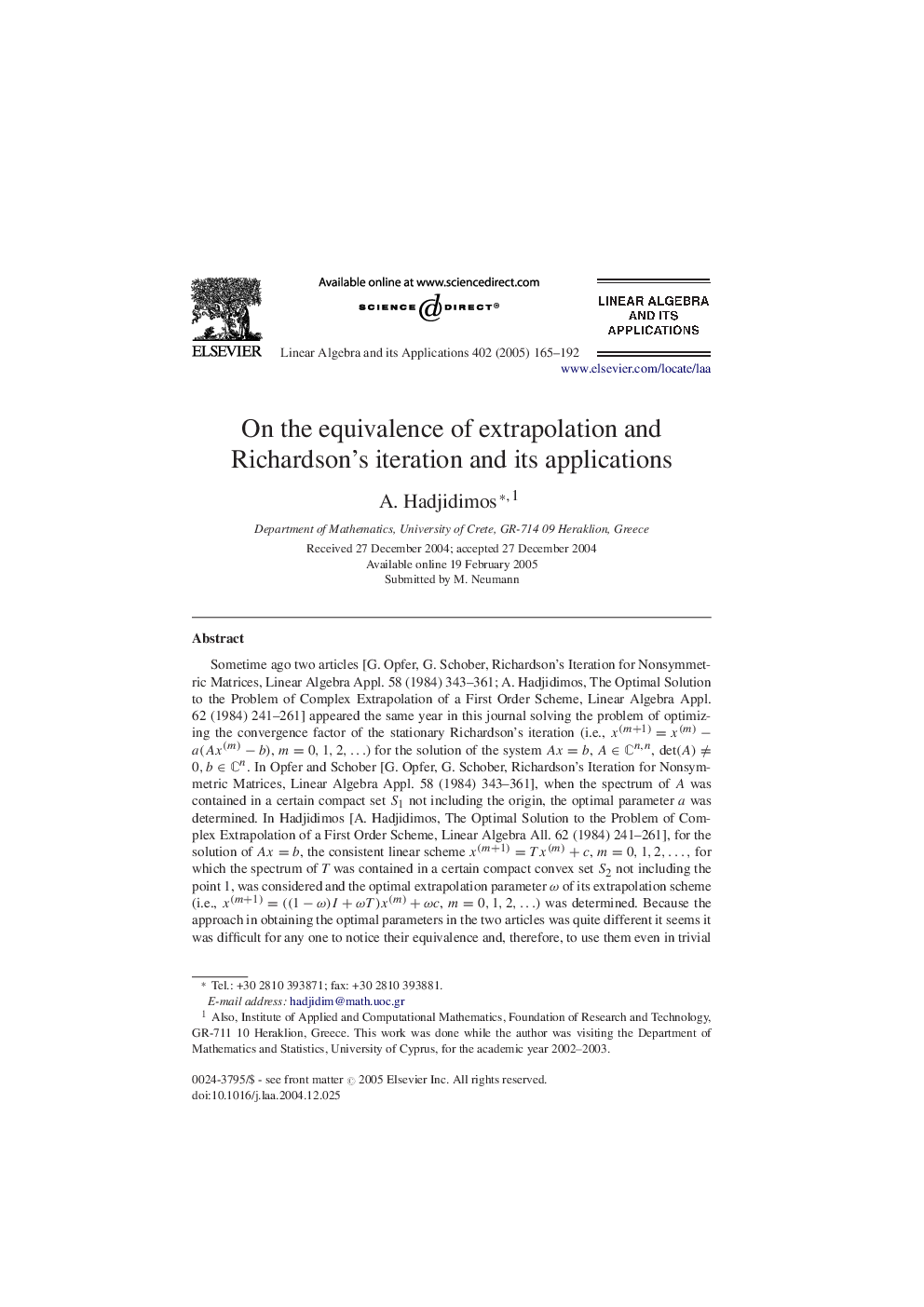| Article ID | Journal | Published Year | Pages | File Type |
|---|---|---|---|---|
| 9498200 | Linear Algebra and its Applications | 2005 | 28 Pages |
Abstract
Sometime ago two articles [G. Opfer, G. Schober, Richardson's Iteration for Nonsymmetric Matrices, Linear Algebra Appl. 58 (1984) 343-361; A. Hadjidimos, The Optimal Solution to the Problem of Complex Extrapolation of a First Order Scheme, Linear Algebra Appl. 62 (1984) 241-261] appeared the same year in this journal solving the problem of optimizing the convergence factor of the stationary Richardson's iteration (i.e., x(m+1) = x(m) â a(Ax(m) â b), m = 0,1,2, â¦) for the solution of the system Ax = b, AâCn,n, det(A) â  0, bâCn. In Opfer and Schober [G. Opfer, G. Schober, Richardson's Iteration for Nonsymmetric Matrices, Linear Algebra Appl. 58 (1984) 343-361], when the spectrum of A was contained in a certain compact set S1 not including the origin, the optimal parameter a was determined. In Hadjidimos [A. Hadjidimos, The Optimal Solution to the Problem of Complex Extrapolation of a First Order Scheme, Linear Algebra All. 62 (1984) 241-261], for the solution of Ax = b, the consistent linear scheme x(m+1) = Tx(m) + c, m = 0,1,2, â¦Â , for which the spectrum of T was contained in a certain compact convex set S2 not including the point 1, was considered and the optimal extrapolation parameter Ï of its extrapolation scheme (i.e., x(m+1) = ((1 â Ï)I + ÏT)x(m) + Ïc, m = 0,1,2, â¦) was determined. Because the approach in obtaining the optimal parameters in the two articles was quite different it seems it was difficult for any one to notice their equivalence and, therefore, to use them even in trivial cases. In this article we show the equivalence of the optimal results in Opfer and Schober [G. Opfer, G. Schober, Richardson's Iteration for Nonsymmetric Matrices, Linear Algebra Appl. 58 (1984) 343-361] and Hadjidimos [A. Hadjidimos, The Optimal Solution to the Problem of Complex Extrapolation of a First Order Scheme, Linear Algebra All. 62 (1984) 241-261], explore them further, obtain new results and give applications for cases which may occur in practice. Finally, based on observations regarding the optimal two-cyclic successive overrelaxation (SOR) and accelerated overrelaxation (AOR) methods in two real case problems we solve the problem of “optimal” two-cyclic AOR in the more general complex case.
Related Topics
Physical Sciences and Engineering
Mathematics
Algebra and Number Theory
Authors
A. Hadjidimos,
